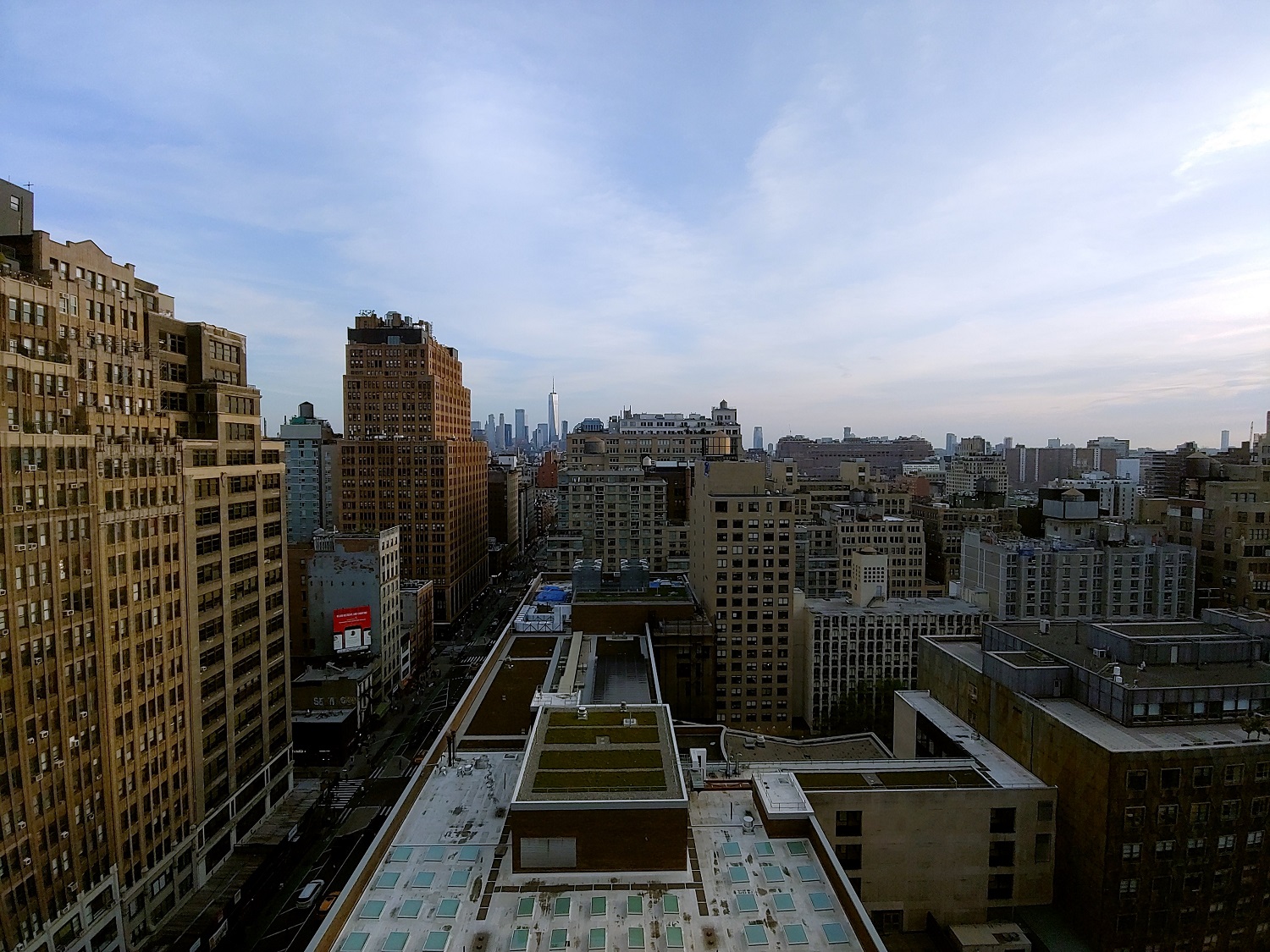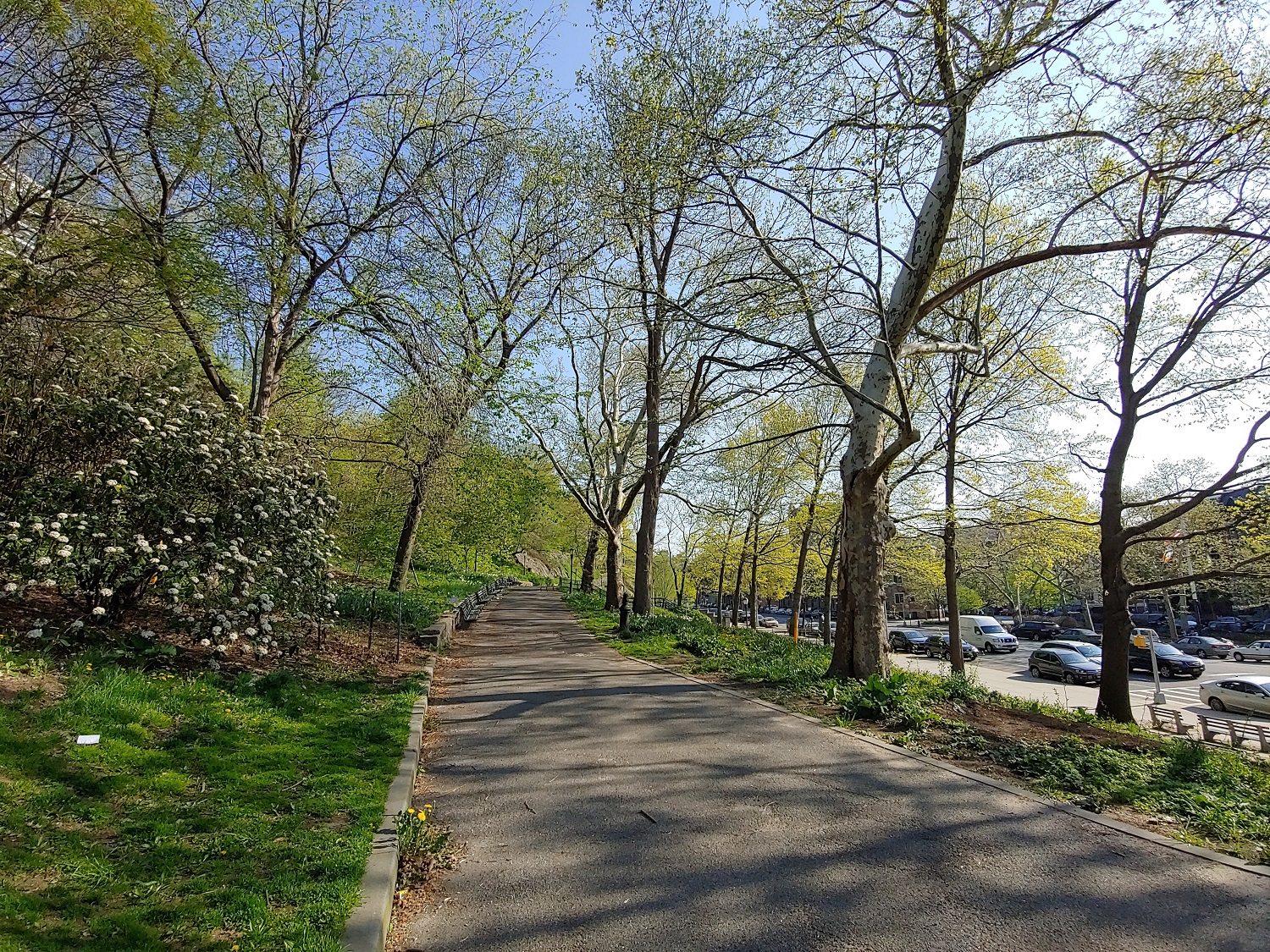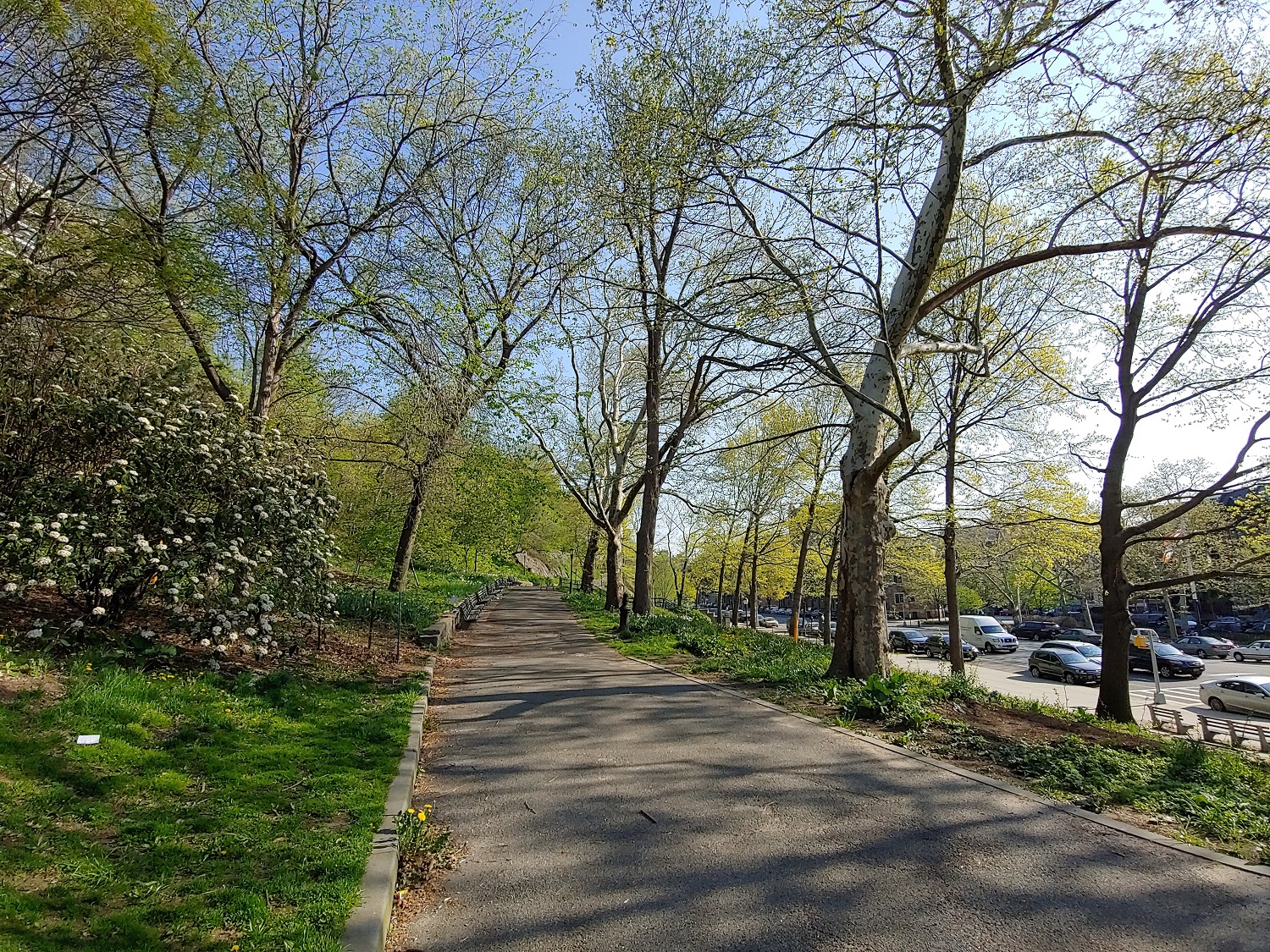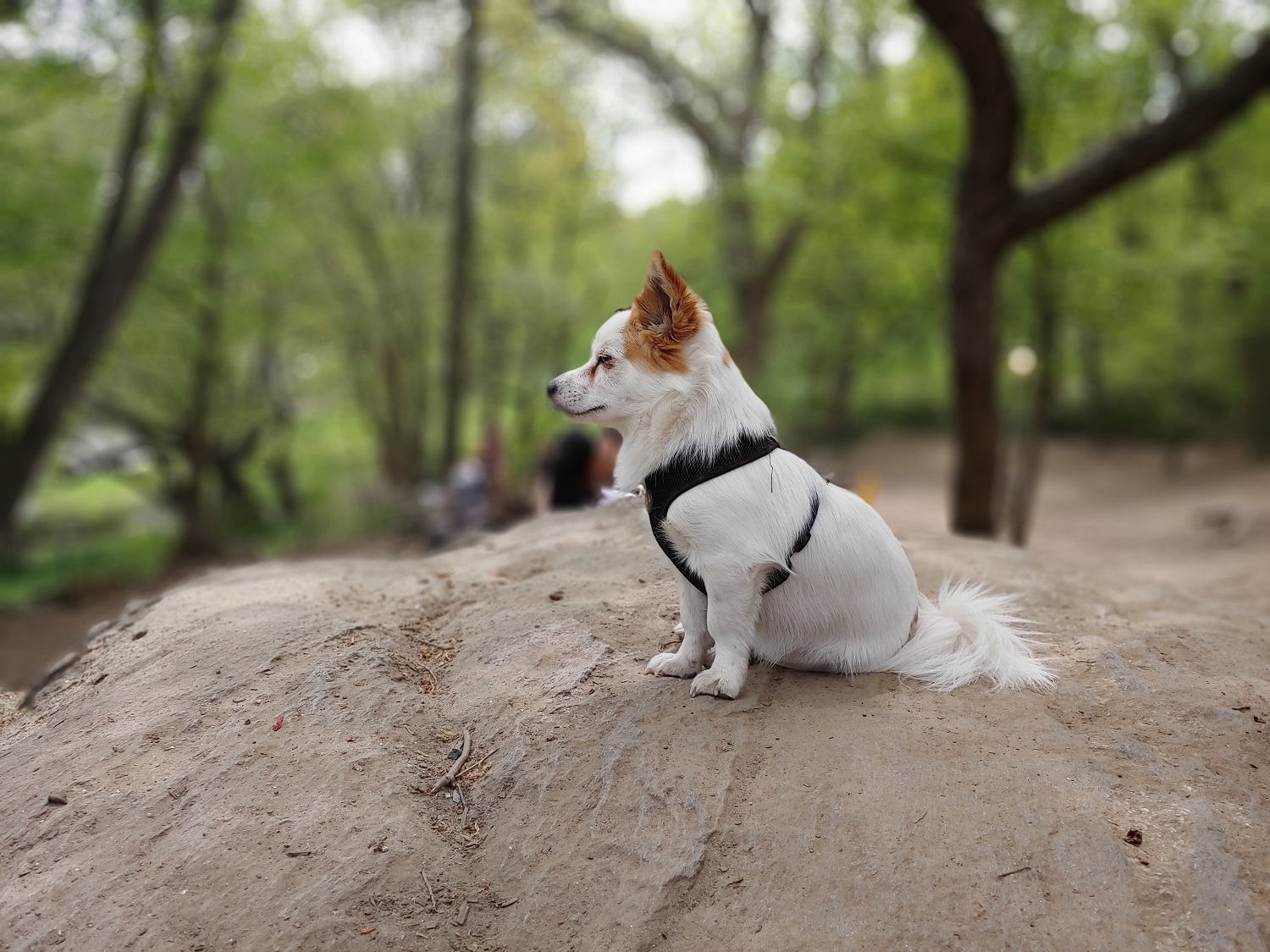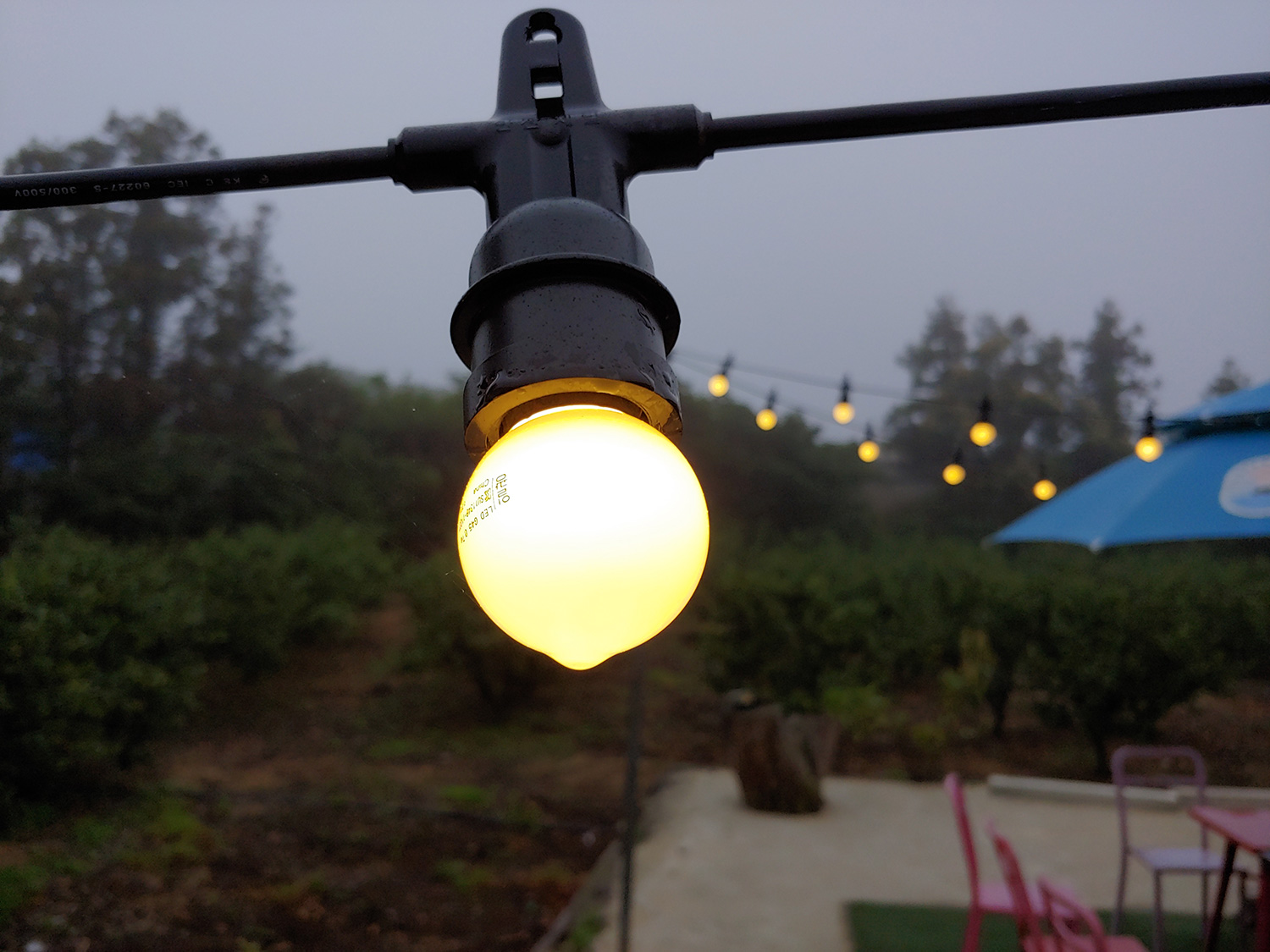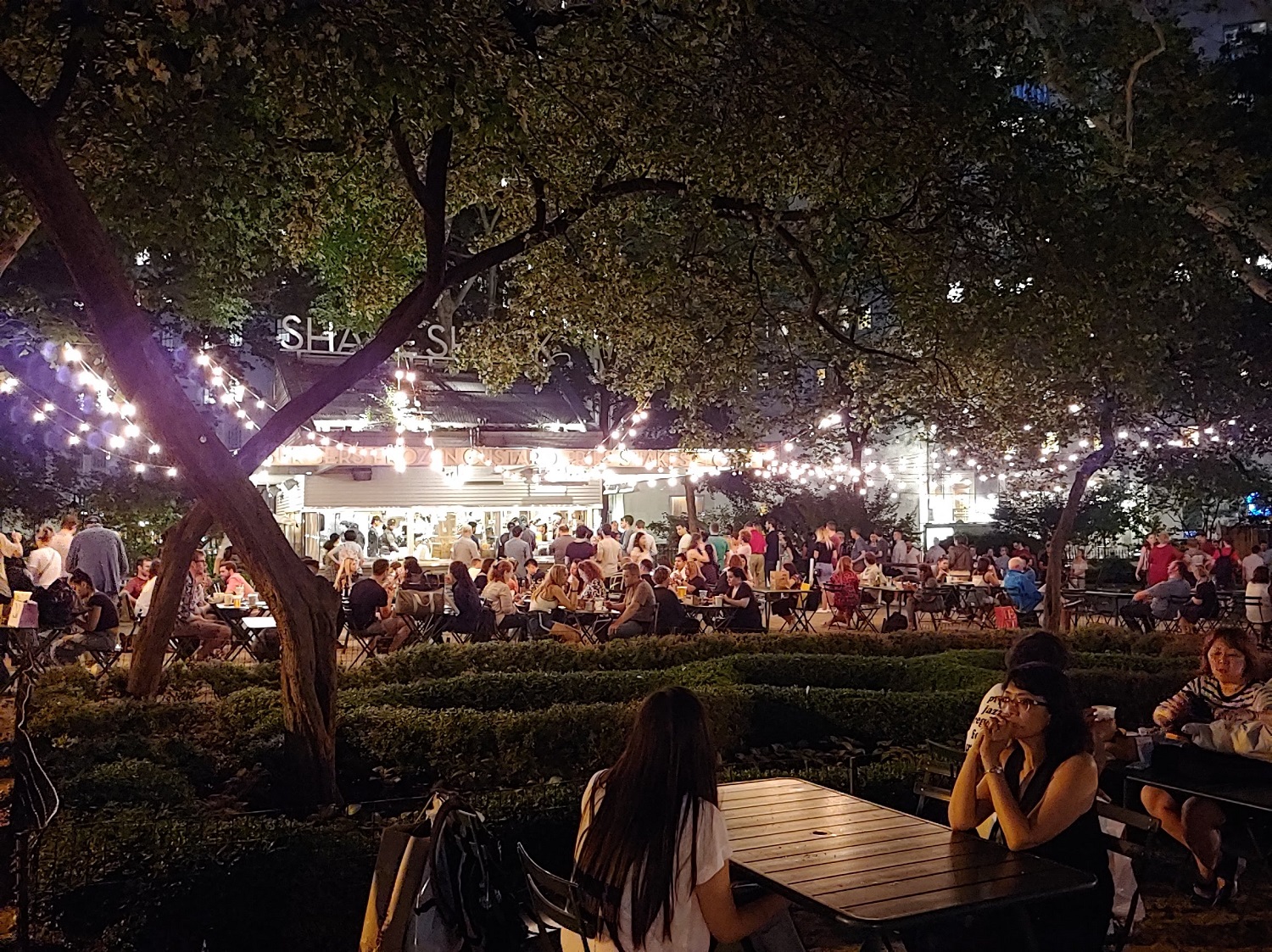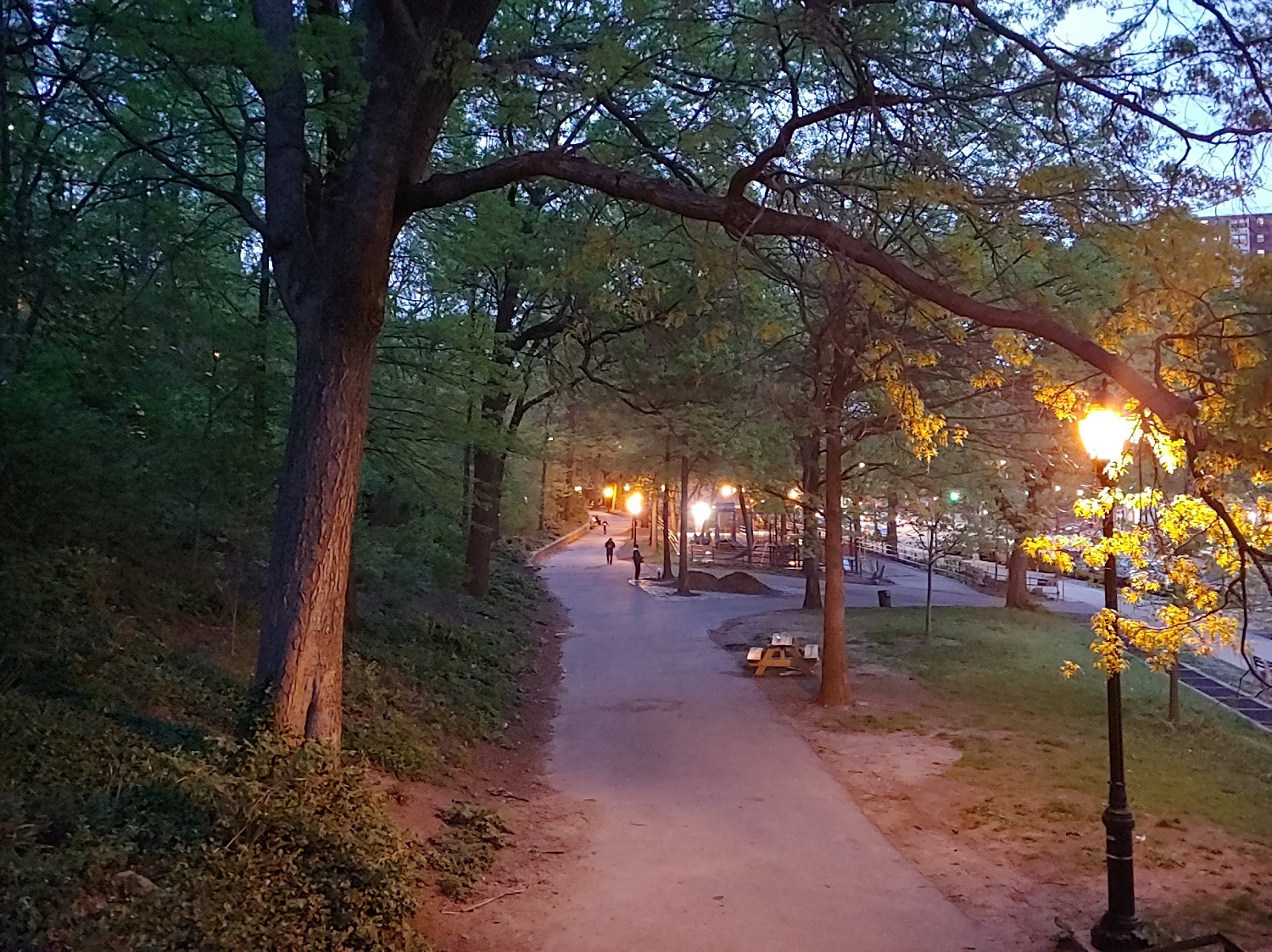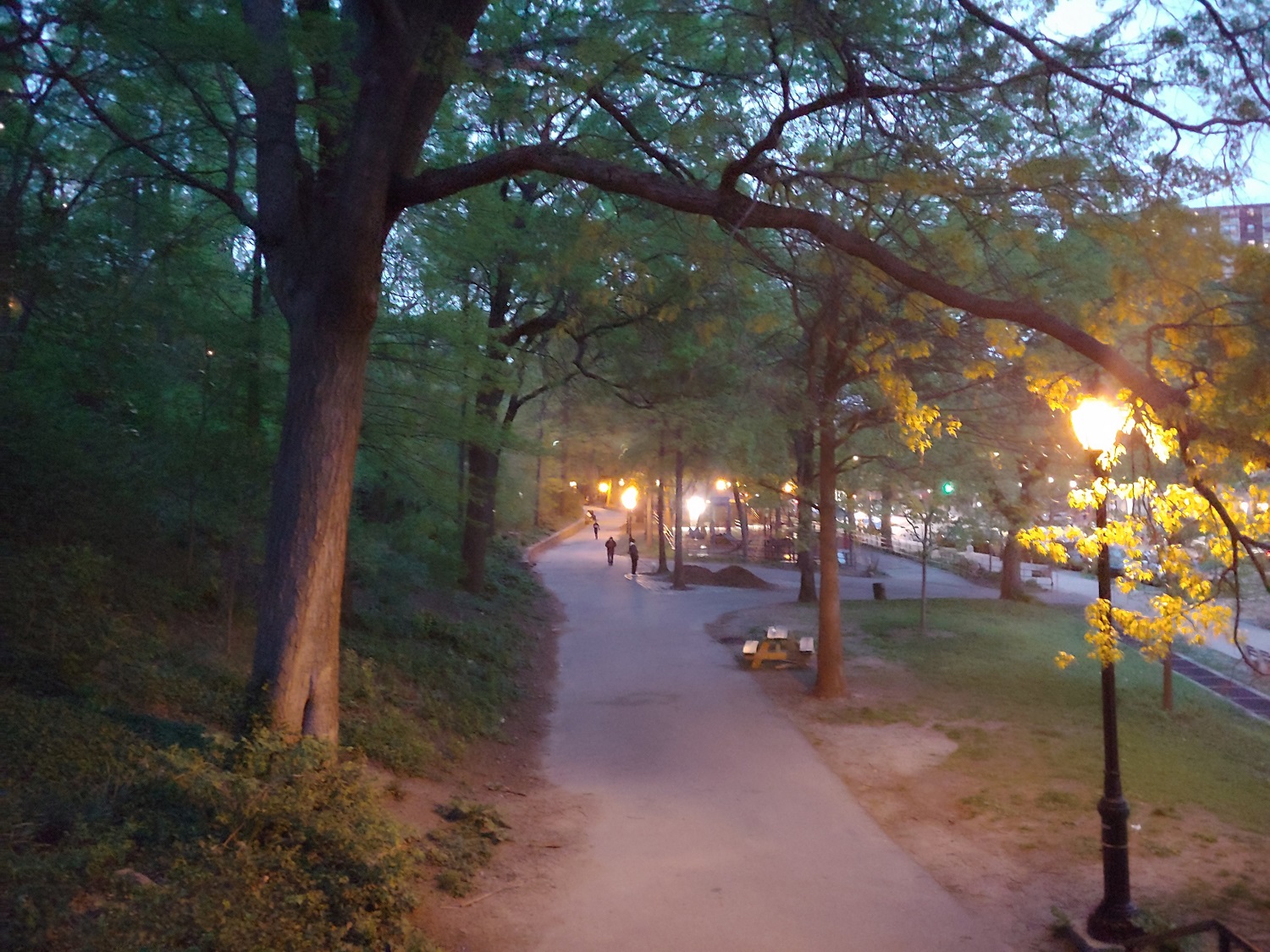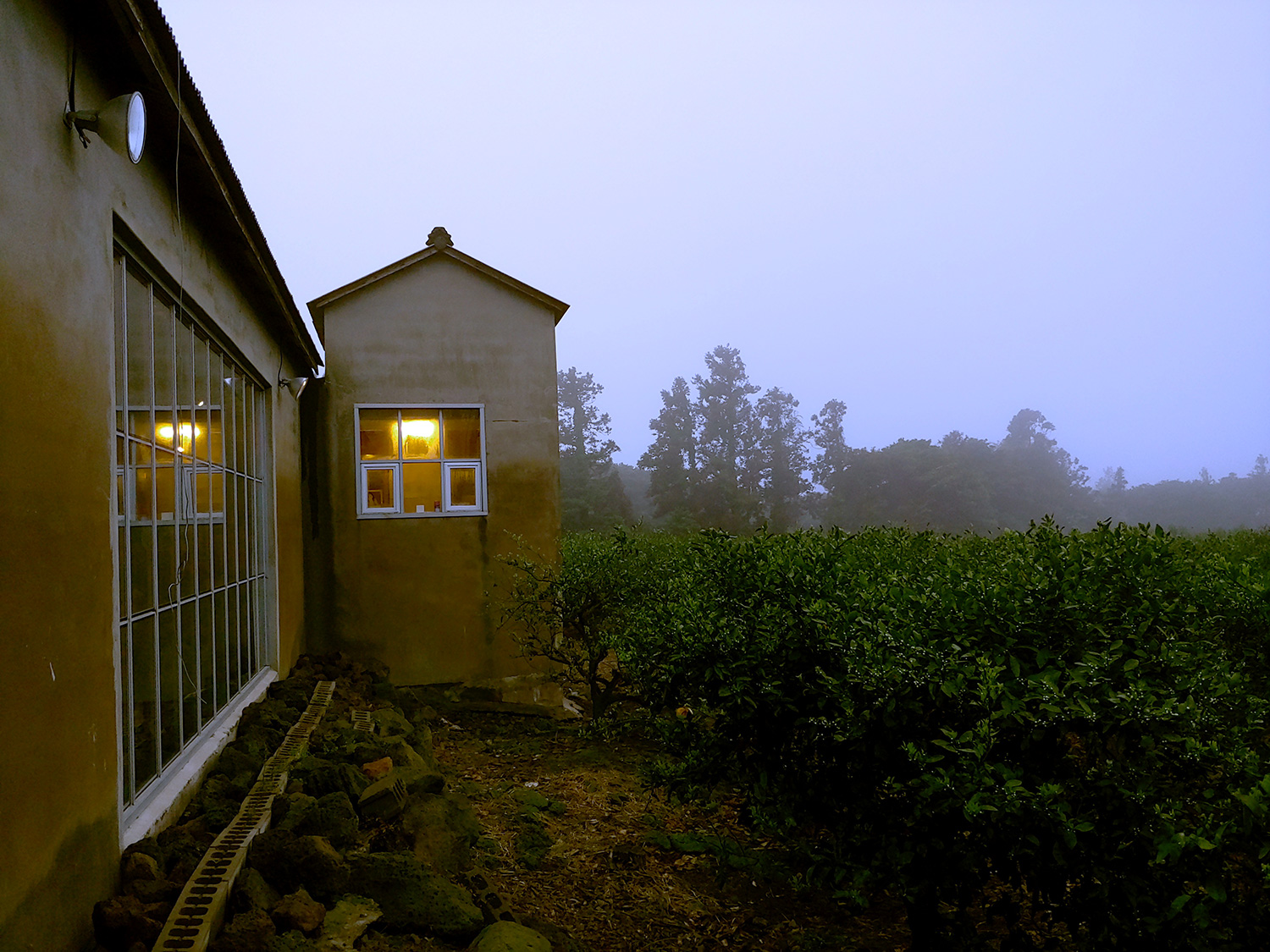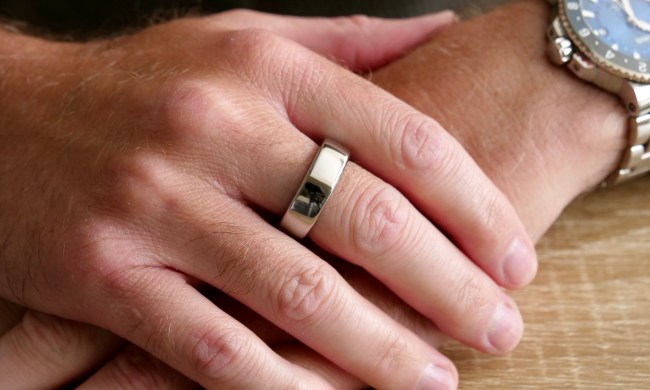- Brilliant-sounding speakers
- Speedy software
- Solid battery life
- Handy wide-angle camera
- Useful Super Bright Display
- Dull design
- AI Cam needs work
- Camera suffers in low light
LG’s latest smartphone — the G7 ThinQ — comes very close to being a great phone. It packs high-end specifications, a modern design, and good battery life. But it’s just not that interesting. It lacks a strong visual identity, the unique features it has aren’t compelling reasons to buy the phone, and the camera falls short of the incredibly strong competition.
The G7 ThinQ costs $750, but we’re starting to see some carriers and retailers knock the price down to around $650. At the lower price, we’re happy to recommend this phone, but at $750, we think you should expect more.
Updated on July 30: We’ve changed our recommendation after seeing price drops on the LG G7 ThinQ.
A notch, chin, and glass
Let’s get the obvious out of the way: Yes, the G7 ThinQ has a notch. It’s the little cutout at the top of the screen, housing the front-facing camera and earpiece. Having used several phones with notches, including the Essential Phone, iPhone X, and Huawei P20 Pro, we don’t have many qualms about it here on the G7. Would we prefer a notch-less look? Absolutely, but we haven’t found its presence distracting.
There’s also a small chin on the bottom of the phone. Considering there’s a notch, we would have liked to see no bezel here — like the iPhone X — but it’s no dealbreaker. This front design does make the G7 stand out a little less from the sea of notch-filled phones.
Yes, the G7 ThinQ has a notch.
If you really hate the notch, there are many ways to customize how it looks in the phone’s settings. You can’t make it go away, but you can “hide” it by adding black bars around it, or even a rainbow-like effect, and you can also remove the rounded corners on the screen if you’re not a fan.
Speaking of ThinQ — what does it mean? It’s LG’s artificially-intelligent platform that connects a host of its products together. If you see LG appliances with the ThinQ branding — like a washing machine — it means you can easily connect them to the G7 ThinQ or V30S ThinQ and control them right from the phone’s notification drawer. It’s a silly name that will likely only confuse customers.
The G7 has a power button on the right side of the phone. It’s the first time in a while that LG has added a standalone power button to its phones; it was previously embedded in the fingerprint sensor on the back. We liked the old-style rear power button, but the new separate one is definitely better, largely because it means you can double press it to quickly open the camera. You can also still double click to turn the screen on or off, which is always handy.
On the left side is a volume rocker, and below it sits a new button — the AI Key. Like Samsung’s Bixby button, the AI Key lets you interact with Google Assistant. It’s one of our favorite features of the G7, as it makes it far easier to access the Assistant when you don’t want to say “Hey Google,” or when your phone screen is off. Press it once to activate voice recognition, or press and hold it to use it like a walkie-talkie and continuously talk to the Assistant. If you double tap the button, you’ll jump right into Google Lens for object identification with the phone’s camera.
The AI Key works well, and it’s fast. We’ve definitely relied on it quite a few times to use Assistant, but we think we’d use it even more if you can use it even with a passcode or PIN. Currently. if you press the button and your phone is locked, you’ll need to unlock it first to use Assistant. It’s a solid security feature, but it does limit the speed and usefulness of having an AI Key. If you don’t want to use it, you can disable it, though we think LG should add a way to remap the button to do something else. LG said if customers ask for this, it may consider adding a remapping option.
Overall, the G7 doesn’t do enough to differentiate its design from the competition
On the bottom is a USB Type-C charging port, a headphone jack, as well as a single, mono speaker — we’ll get to the speaker in a bit. Flip the phone over and you’ll see LG has followed Samsung’s S9 Plus design to prop the cameras vertically instead of horizontally. The dual-camera setup is centered at the top vertically, with an easy-to-access fingerprint sensor below it. The back of the phone is covered in Gorilla Glass 5 (so is the front), and the use of glass allows the G7 to wirelessly charge with the Qi standard; it’s par for the course on LG phones.
The phone is surprisingly comfortable in the hand, considering its 6.1-inch display, and its incredibly light weight helps (162 grams). That lightweight nature gives a false impression that the G7 doesn’t feel as substantial as some other flagship phones.
Overall, the G7 doesn’t do enough to differentiate its design from the competition. The colors available from most retailers are incredibly dull, the notch design makes it look like many other phones, and while we like the new power button, the loss of the rear one strips away that LG identity. That being said, we still think the phone looks sleek and modern — if a little boring — and it doesn’t feel unwieldy in the hand. If you’re going to buy it and you’re on T-Mobile, get the Raspberry Rose color, as it looks fantastic.
Boombox speaker
LG places a lot of emphasis on its audio prowess with phones like the V30 — which sports a Quad DAC, and of course retains the headphone jack. The same Quad DAC and headphone jack is present on the G7 ThinQ, with support for DTS.X 3D sound, a surround sound technology similar to Dolby Atmos.

But the spotlight feature for the G7 ThinQ is its “Boombox” speaker. How can a single, bottom-firing mono speaker produce boombox-like sound? LG removed the module that traditionally covers the speaker, and then tweaked the layout of the phone’s internals to make the whole phone a resonance chamber. That means the audio feels like it’s coming from the whole body of the phone, and it sounds fantastic.
The audio feels like it’s coming from the whole body of the phone, and it sounds fantastic.
We played a variety of tunes and compared the G7’s Boombox speaker with stereo speakers from the iPhone X, the Galaxy S9 Plus, and the Huawei P20 Pro, and the G7 got louder, and sounded richer. It didn’t sound like you were playing music from a phone, but from an inexpensive Bluetooth speaker. Since the whole phone becomes a resonance chamber, music can sound even better depending on the surface you place the phone on — hollow wood, for example, further enhanced the audio. The stereo speakers from phones like the S9 Plus held their own, and oftentimes had benefits, like when holding the phone, or watching a video. But if you’re predominantly playing music from your phone’s speakers, the G7 comes out on top.
While we’re impressed with how the G7 sounds, we still prefer Bluetooth speakers or headphones. For those who make frequent use of their phone speakers, they will undoubtedly be surprised and happy with the audio quality coming out of the G7.
Oddly, the phone’s IP68 waterproof seal is tied to the Boombox functionality, so if the seal breaks in some way, then the audio quality may be hampered. LG also said it’s recommending case makers opt for harder cases than soft ones, as the latter could also absorb some of the resonating sound.
Speedy performance, great display
The LG G7 ThinQ is powered by Qualcomm’s Snapdragon 845 processor, and comes with either 4GB of RAM and 64GB of internal storage, or 6GB of RAM and 128GB of internal storage. We’re happy to see that LG didn’t opt for last year’s processor, like it did with the LG G6.
In our entire testing period, we’ve never once run into any lag or slowdown on the G7. The Snapdragon 845 processor is a powerhouse, and it can handle almost anything you throw at it. We played games such as PUBG: Mobile and Transformers: Forged to Fight, and they ran without a hitch. The phone can get quite warm, but it never posed an issue.
Moving throughout the Android 8.0 operating system is fluid and smooth, and there’s thankfully not much third-party bloatware loaded on top (just a number of LG apps). It’s not pure Android, however, as LG has its own skin enabled. It’s not our favorite user interface, design-wise, but it does offer a good amount of customization options.
Here are a few benchmark results:
- AnTuTu 3D Bench: 258.516
- 3DMark Sling Shot Extreme: 3,802 OpenGL; 3,195 Vulkan
Last year’s LG G6 scored an AnTuTu score of 135,032, and it was powered by the Snapdragon 821. The Galaxy S9 Plus scored a 261,876 — the scores are almost the same. Expect the ability to run multiple apps simultaneously, and play graphics-intensive games without stutter or lag. This phone should not give you any problems with performance.

The 6.1-inch IPS LCD screen is great — it’s bright, and sharp with a 3,120 x 1,440 pixel resolution (564 pixels-per-inch). It supports HDR10, and the colors look thoroughly rich. The phone does have a unique 19.5:9 aspect ratio, which means you’re getting a slightly taller screen.
Going back to the notch, LG is calling the area around it the “new second screen,” which basically means it’s the place that shows your notifications, as well as system icons like the clock and cellular connectivity. If you do add black bars, it’s surprisingly difficult to tell the phone has a notch — that’s how deep the blacks look. You have to look closely to be able to tell.
Super Bright Display allows you to boost the screen’s brightness up to 1,000 nits, but only for up to three minutes.
What’s unique about the screen is a new mode called Super Bright Display. It allows you to boost the screen’s brightness up to 1,000 nits, but only for up to three minutes — that’s to prevent the battery from dying quickly. It’s a little button you can tap next to the brightness slider in the notification drawer. It’s useful for when you’re outside and having trouble seeing the screen, and we found it gets bright enough to make a difference. It’s a genuinely convenient addition.
LG claims it has reduced the screen’s power consumption over the LG G6 by 30 percent at the same luminance (500 nits), which means the screen won’t take up much battery life. We’re definitely surprised at the G7’s battery life, but we’ll get to that in the battery section.
Wide-angle camera, and artificial intelligence
The G7 ThinQ uses the same dual-cam setup LG has relied on in previous devices — a standard 16-megapixel camera, with a f/1.6 aperture and optical image stabilization, is paired with a 16-megapixel f/1.9 wide-angle camera. We’re happy with the results from both cameras in good light environments, but we’re somewhat disappointed in their low-light capabilities. LG even added a Super Bright Camera mode that does help in night-time shooting conditions, but low-light on the G7 is just not up to par with the competition. There’s also a tiny amount of shutter lag in the camera app, which feels sluggish overall.

The wide-angle mode makes the camera incredibly versatile, allowing you to take 107-degree photos. LG is one of the only manufacturers offering a super wide-angle camera on a smartphone, and it helps make the phone stand out. You can take unique photographs on the G7 that would require a lens mount to snap on other smartphones. We have noticed, however, that the wide-angle camera doesn’t capture as much detail as the standard camera. Zoom into photos, and you’ll notice detail and color just aren’t as accurate. Still, it’s easy to take some spectacular photos with it, especially with the right subject.
We’re quite fond of the standard, non-wide angle camera lens too, as it often offers superior detail, and good color. LG has also added in a Portrait mode. It adds a blur effect around a subject, and in our tests, it looks pretty good. What’s unique here is the camera doesn’t crop into the subject — it stays at the same distance as the auto mode so you don’t need to suddenly adjust your framing. We have noticed some errors with the blur lines around a subject, and it can be frustrating to use sometimes as the camera doesn’t always register your distance from the subject. It does work surprisingly well with the 8-megapixel selfie camera. Take a look at some photos below taken with the main lens, and with both lenses using Portrait mode.
Like the wide-angle lens, however, it also doesn’t perform well in low-light. Take a look at the photos below — most are taken with the Super Bright Camera mode, which adds far more details and is more defined. This mode enlarges the pixels so they absorb more light, but it lowers the overall pixel count. The end result is a 4-megapixel photo that has a lower resolution, but it will be clearer and more shareable. This mode turns on automatically when the camera detects it’s in a low-light environment, but you can turn it off if you prefer. It’s certainly better to use it on the G7, but we’ve taken better low-light photos with other phones like like the P20 Pro, Google Pixel 2, and the Galaxy S9.
Then there’s AI Cam. It’s a separate mode in the camera that automatically identifies the scene you’re pointing the phone towards. If you point the phone at a sunset, the camera will know it’s a sunset, and it will compare your scene to images of sunsets to try and offer up the best-looking photo. With the G7, AI Cam can now identify 10 more scenes including baby faces, animals, drinks, fruits, and more — bringing the total amount of categories to 19. Once it identifies a scene, it alters the photo to change things like saturation, exposure, and more. It can even recommend a wider-angle view, or suggest using the Super Bright Camera mode when it’s too dark.
We think the AI Cam is better than Huawei’s AI image recognition software, which often simply cranks the saturation up. The AI Cam certainly does boost saturation, but it’s not as intense as Huawei’s technology. It still needs more work, and we almost always end up preferring standard photos not tweaked by AI. We’re also not fans of how it’s a separate mode we have to open up in the camera app, and we much prefer Huawei’s implementation. At the moment, we recommend ignoring the AI Cam, as you likely won’t like its results.
The LG G7 ThinQ can take great photos. The camera app experience is a little sluggish, though, and its low light capabilities fall short of the competition. That’s why — at $750 — LG needs to do better. If the Galaxy S9 can take excellent low-light photos and it costs less than the G7, we don’t see why you should pay more for a worse experience. Even the $650 Google Pixel 2’s camera outdoes the G7 in almost every way, not just in low-light photography.
Battery life
Considering the LG G7 has a small-capacity 3,000mAh battery, which is on the low end for a flagship phone this size, we’re surprised at how long it can last. On normal workdays, taking the phone off the charger around 8 a.m., we arrived back home with about 45 percent remaining. That’s after using the camera, watching videos, and playing a few games. On lighter usage days, with just some messaging, social media usage, and web browsing, we ended the day with well more than 50 percent remaining. You’ll definitely be able to use this phone for more than a day on a single charge.
It charges up relatively quick, thanks to Quick Charge 3.0. We put it on the charger when it was at 22 percent at 2:23 a.m., and the phone hit 100 percent at 3:45 a.m. You can also juice up with a wireless charger, but it won’t charge as fast.
Price, availability, warranty information
The LG G7 ThinQ costs $750, which is $100 more than last year’s LG G6. LG often drops the price not long after its phone releases — the LG G6 dropped to $450 within a few months — and now the G7 ThinQ has dropped to $650 from carriers like Verizon and retailers like Amazon
Our Take
The LG G7 ThinQ is a very good phone, but it will fly under the radar because it doesn’t have any standout feature. Our biggest problems are with the G7’s mediocre low-light cameras, which can’t hold a candle to the competition, and its dull design.
Are there better alternatives?
Yes. We think the Samsung Galaxy S9 is a good choice (and it’s cheaper), because you’ll find better low-light camera performance. You should also consider the Google Pixel 2, which costs $100 less. It has a far better software experience, and a better camera. If you can buy it, the Huawei P20 Pro is an excellent camera phone as well that nails all the other smartphone fundamentals, but it is much more expensive.
If budget is a concern, the OnePlus 6 should be on your radar. It shares many of the same internal specs, the camera is solid, and it only costs $530. It only works on AT&T and T-Mobile, though.
How long will it last?
The LG G7 ThinQ will last you two to three years. You should nab a case to protect it from accidental drops, but the phone’s IP68 water-resistance rating means it should survive dips in water. LG has opened a new software update center, promising timely updates not just for new Android version and security updates, but for adding new features to the phone. We’ll have to wait and see if the company delivers, but you should get the next two version upgrades of Android.
Should you buy it?
Yes, but only at the $650 price tag or lower. For $750, you can get smartphones with similar performance and better software, and much stronger cameras. If photography isn’t an important selling point for you, then you won’t have many qualms about this phone.

















